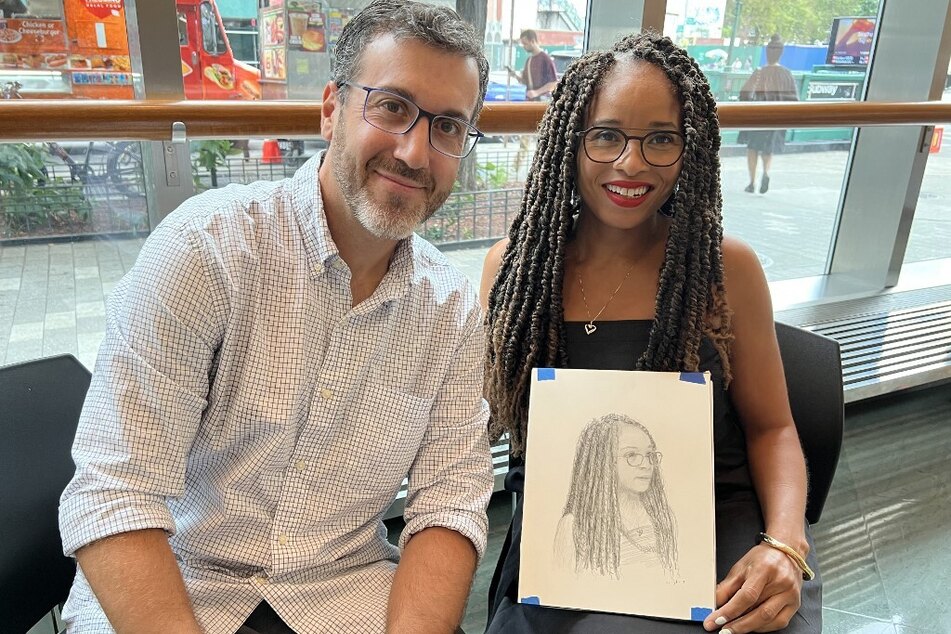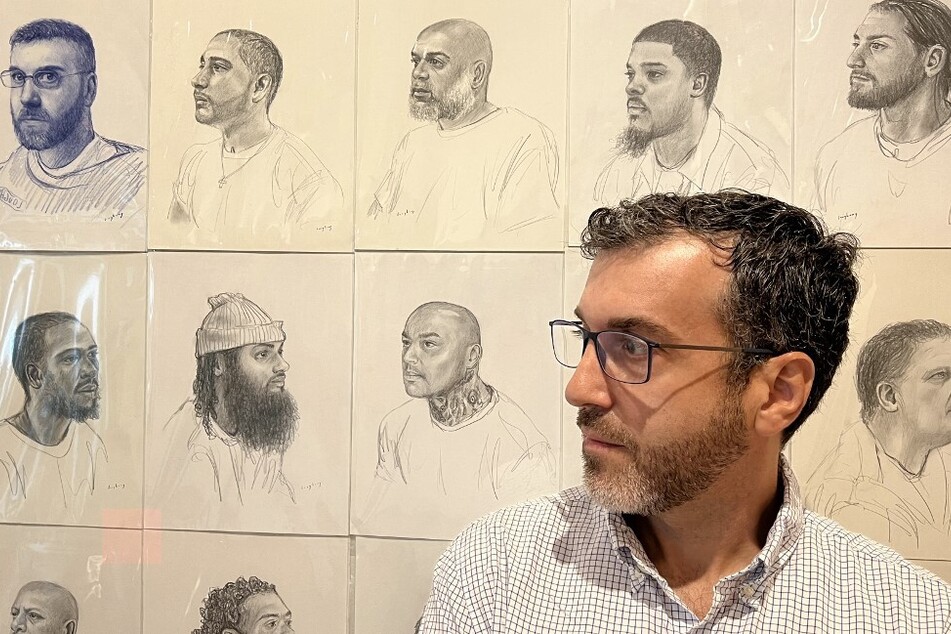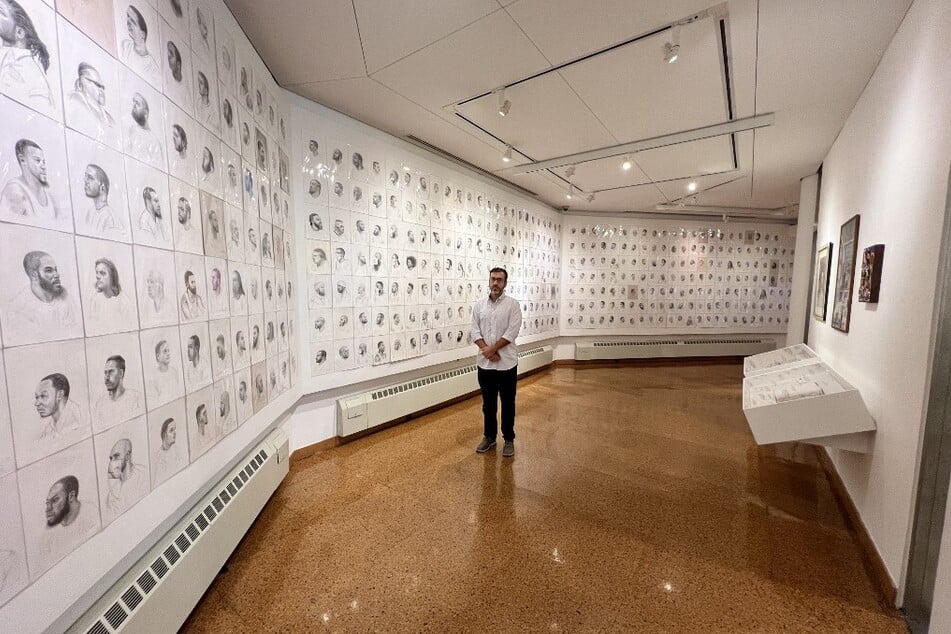NYC's Marking Time exhibit takes on US mass incarceration
New York, New York - The image in the window announcing the Schomburg Center's current art exhibition holds a sad resonance to many who pass it in New York's Harlem neighborhood.

The piece by Larry Cook shows a Black man with his back to the camera in a pose and composition evocative of a prison waiting area in the moments before seeing a loved one.
"It gets a lot of attention," said Nicole Fleetwood, curator of the show Marking Time: Art in the Age of Mass Incarceration.
"Harlem is a hyper-incarcerated community in a global cultural landmark," said Fleetwood, adding that the Cook piece feels "very familiar" to locals.
The exhibit is comprised of works by artists who have been incarcerated or others – like Cook, whose uncles were incarcerated – who have seen the effects up close.
Critics often point to America's exceptionally high per-capita incarceration rate as evidence of a draconian justice system in need of change.
The exhibit, which has traveled around the United States, showcases the psychological costs of what the show refers to as the "carceral state."
The art is an "insistence of presence," Fleetwood said. "It's an insistence to connect with their loved ones and a larger aesthetic community and a larger political movement of people who want to end the current system that we have."
"Each face has a story"

Among the most striking works is a series of portraits of incarcerated men.
Artist Mark Loughney, who was in prison for 10 years on an arson-related assault charge, said he did the drawings whenever he had time in common spaces at the medium-security state prison in Pennsylvania, like gymnasiums.
While there was often a clamor – the prison holds around 2,000 inmates, some of whom are serving life sentences – the experience was "very meditative," he recalled.
"For a lot of these guys, I think it was really meaningful," he said. "Just to be part of something that they could kind of assert their individualism and identity and humanity."
Loughney said he began the sketches as a way to earn commissary money from men who wanted to send the picture to their families.
But after the first 100 or so were exhibited in 2017 in his hometown in Pennsylvania in a show organized by relatives, Loughney realized the potential for a larger statement.
At the Schomburg, the portraits stretch out over five gallery walls, each containing rows and rows of images. The sitters, portrayed from the shoulder up, look out to the side, wearing resolute, sober expressions. None are identified by name, nor does the show explain why they are in prison.
Like the overall US prison population, the overwhelming number of the 770 sitters are Black men and other men of color.
"Prison has a way of erasing people," Loughney, who himself is white, said. "If you look at these portraits, each face has a story."
Loughney was released in 2022, but plans to continue the project with sketches of activists and others who back reform.
"I have a mission now," Loughney said. "Mass incarceration isn't something that people are thinking about or talking about. And I think it's one of the most salient issues in our country."
Evolving exhibit

The United States has 5.4 million people under supervision in the criminal justice system, with 1.8 million incarcerated and the rest under parole or probation, according to the Bureau of Justice Statistics.
This population is dominated by ethnic minorities, poor people, immigrants and people with substance abuse problems, said Fleetwood, a professor of communications at New York University.
"It's a system that reproduces inequality and that continues to impoverish and make vulnerable the lives of people that are already at the margins of society," she said.
Fleetwood began the project more than a decade ago, in part to "grieve" family members who were incarcerated. As she shared their images in talks at universities and museums, she encountered more people with the same experience.
She said the project grew organically, spawning an award-winning book and the exhibit, which originally premiered in Queens in September 2020.
The show has also traveled to Fleetwood's home state of Ohio, Brown University in Rhode Island, and Birmingham, Alabama, where some prisons are built on former slave-owning plantations.
With each incarnation, the art selected changes a bit. Fleetwood expects the show to travel further, possibly to Canada or Europe.
"People are in awe of the art," Fleetwood said of the reception. "And they also leave more committed than ever to ending the criminal legal system that currently locks up many millions of people."
Cover photo: DIANE DESOBEAU / AFP